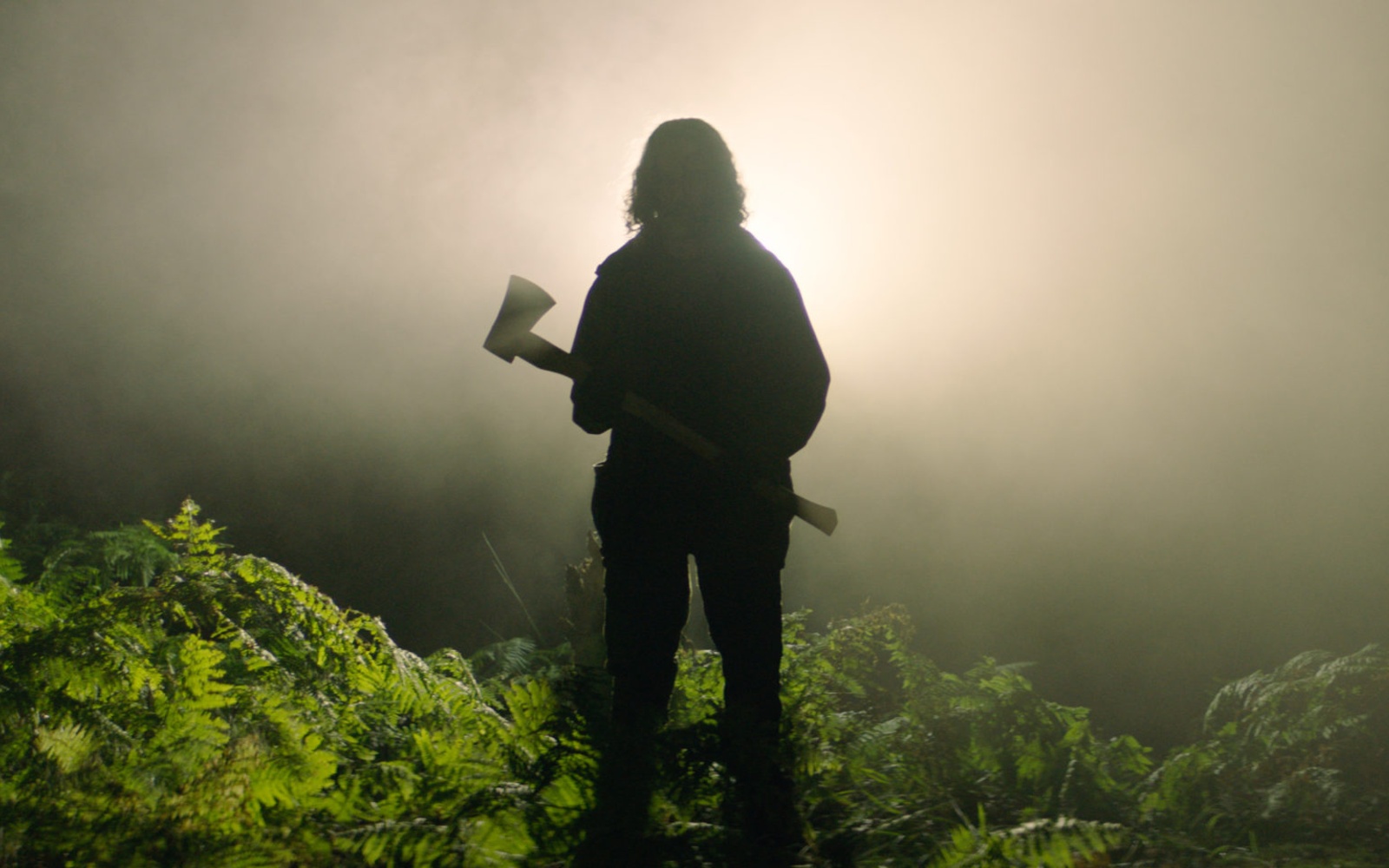There is a stellar moment in Mark Harris’ stunning new biography Mike Nichols: A Life in which the director’s early 70s oddity The Day of the Dolphin is released to dismissive and hostile reviews. Leave it to Pauline Kael to hurl the most incisive and devastating line about the film: “If Mike Nichols and [screenwriter] Buck Henry don’t have anything better to make movies about than English-speaking dolphins in assassination attempts, why don’t they stop making movies?” It was difficult not to think of that comment when watching Ben Wheatley’s In the Earth, a pandemic horror film that lands with a thud. A Deadline article published the day of Earth’s world premiere at the Sundance Film Festival explained that, according to Wheatley, “He simply wanted to make a movie and get [out] of the house.”
Creating a new film is not the worst way to spend some forced COVID-19 downtime. It is, however, no excuse for making one as tiresome and disappointing as In the Earth. Its sledgehammer allusions to 2020-21 and obviously of-the-moment shooting conditions (from the Deadline piece: “Making a movie outside, in the woods over 15 days, seemed a safe bet”) are distracting. So, too, is Wheatley’s insistence on diving head-first into nonsensical plotting and characterizations. There are no new insights into pandemic mania, and despite strong performances from four well-cast actors, some sharp humor, and a few go-for-broke moments that engage, the majority of In the Earth is an utter slog.
Things start promisingly enough, as solitary researcher Dr. Martin Lowery (Joel Fry) arrives at a sparsely populated outpost in an English forest. He is greeted by signs shouting “STOP THE SPREAD OF GERMS” and “Disinfection Point.” As he greets some mask-wearing occupants there are hushed references to isolation and “the third wave.” His goal is to reach a testing site deep in the woods, where another researcher is supposedly deep into a project. His guide will be Alma (Ellora Torchia), a park scout who warns that the journey will take at least two days. This news seems to perturb Martin, and his reaction draws the suspicions of Alma. Clearly, the soft-spoken Martin is hiding something. Then again, who isn’t hiding something during a raging pandemic?
Martin’s secrets are (somewhat) revealed over the course of the film, but are not particularly impactful. Fry gives a fine performance, especially once things get … well, a bit crazy. Yet it is Alma who feels like a more fresh and compelling character, thanks to Torchia’s often exasperated approach. She is the voice of reason in a story that has little.
The duo come upon an abandoned campsite, and are soon attacked by an unseen assailant. Now shoeless, with their electronic devices destroyed and seeds stolen (hmm), they are left to wander. Eventually, they are offered help by a seen-it-all, hippie-ish figure named Zac (Reece Shearsmith). He brings them to a ramshackle series of tents (“It’s a liberation to build your own shelter,” he explains), offers them a flower-based beverage, and strums a guitar while sweetly uttering, “You must be sleepy … you should rest.” Clint Mansell’s synth-heavy score grows more ominous, Martin and Alma hit the deck, and Zac becomes the world’s most gruesome photographer and amatuer surgeon.
Torture, paranoid ranting, and some very dark humor follow. (Zac explains to Martin that his wounded foot requires care, but there is no getting to a hospital in time. Martin: “What’s the alternative?” Zac, with clear-eyed cheer: “Amputation.”) Eventually, Martin and Alma encounter the researcher he sought in the first place, Dr. Olivia Wendle (played by I,Daniel Blake standout Hayley Squires). Prior to this comes a stirring, strobe-light-laden chase scene, but now the film descends into madness even more slowly. Through it all, Wheatley shows once again that he is as adept as any filmmaker on the planet in creating sequences of nearly unbearable intensity and gorgeously sinister imagery. But that’s all that lingers here: the images. Unfortunately, it’s not nearly enough. By the time In the Earth reaches its close, only the fate of Alma intrigues. It is hard to care about the rest of the cast, not to mention the story.
There are moments when the Manson-drenched psychedelic spirit of Wheatley’s Kill List and A Field in England can be felt, as well as the energy of High-Rise; I still stand behind his slick 2015 Ballard adaptation, despite its mixed reputation. And Wheatley can never, ever be called unimaginative. For the filmmaker’s completists — those who defend Free Fire, watched Rebecca on day one of streaming, and are seriously hopeful about a sequel to The Meg — it is a must-watch. Indeed, it is worth watching for anyone curious to see how a talented filmmaker works on a new project in the time of COVID. Perhaps months or even years from now, it will be easier to disassociate the film from the real-world details that influenced its creation and give it a second look. In the present, though, In the Earth feels like a project designed to stave up boredom. Perhaps it did, for Wheatley and his crew. For everyone else, the memories of watching will be quickly buried.
In the Earth premiered at Sundance Film Festival.

